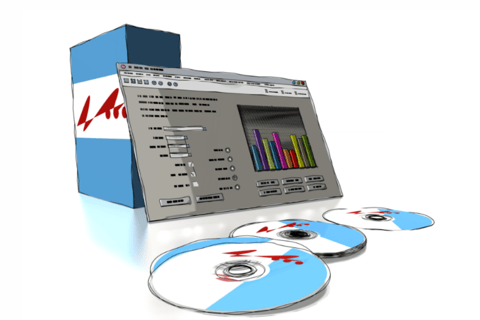arise when one has to manage the quality control of products without an internal laboratory? This paradox actually hides two issues :
- Operational management of quality control.
- Access to a digitalized laboratory to manage analytical subcontracting.
We were recently in contact with a company that works in the field of health ingredients.
This structure of about ten people, certified FSSC 22000, offers about a hundred references, mainly in trade. It has a small in-house manufacturing
activity and entrusts some of its products to processors under its own brand. In the absence of an in-house control laboratory, analyses are entrusted to
subcontracted laboratories.
The Quality manager is responsible for quality control and relations with these labs.

An in-house control lab: the solution?
At present, the organisation does not wish to invest in an in-house control lab.
The wide range of very different and sometimes volatile products often blocks the rationalisation of internal controls: indeed, the analysis of certain substances and contaminants is specific to each reference. It is difficult to invest in analysis equipment, methods, consumables and recruitment, especially if this expertise is available externally.
- Little or no analysis during the manufacture of the products because validation and qualification processes of the raw materials allow a control in fine.
- Sufficiently long shelf lives allow for a later release after controls than in the ultra-fresh sector, for example, which allows for longer analysis times
- Subcontracting the analyses allows costs to be absorbed as closely as possible to the activity.
The urge to solve problem
- The monitoring activity is spread over different monitoring, consultation and storage media.
- The activity lacks automation in the tasks inherent in control analysis.
- Monitoring of external analyses and deadlines is difficult.
- The activity does not sufficiently capitalise on all the data it processes and generates.
This company wanted to simplify its control process, increase its level of performance and demonstrate its ability to control its products effectively.
To date, the proposed solutions such as EDM (Electronic Document Management) are too focused on the document life cycle and quality management but not enough on the operational part of control.
As for most LIMS, they are far too powerful and used for the analytical processing of a sample in a laboratory (multi-resource allocation and workflows).
How to easily manage the cycle of controls, the follow-up of analyses while increasing its expertise potential with numerous external laboratories?
Towards a "digital laboratory"?
No, for the moment it is not yet a laboratory run by artificial intelligence and robots (although it may not be so far off…)
The principle is to be able to manage your specifications, automate your controls, your periodic plans and benefit from the expertise of numerous subcontractors that you federate in a SaaS mode application. It is the ultimate laboratory for your needs today and in the future. The volume of service providers to manage is no longer a brake, it is an accelerator!
- Identify and register future partners.
- Allocate each analysis to a specialist.
- Combine several laboratories for the same analysis, choose the expert on your matrix, compare your suppliers and laboratories between them.
- Easily track all your analyses and manage your batches.
- Build and exploit your analytical capital.
By easily managing a wide range of subcontracted laboratories, you can anticipate future needs and above all demonstrate now that your analyses are :
- reliable
- robust
- unbiased
Make your analysis results the strength of your products, a real predictive tool and a driver for improvement.
In conclusion
Finally, to this initial question: Do I need a LIMS to manage the outsourcing of my analyses?
The answer is reasonably no.
You would only be using a tiny fraction of what the power of a LIMS can offer!
LIMS are resolutely oriented to the organization of an internal laboratory. CIKlab, whose operating principle is quite similar to that of a LIMS, is clearly open to the outside world.
It allows you to design YOUR digital laboratory… it is the one that you will build with specialists and that will change the daily life of your organisation today!



